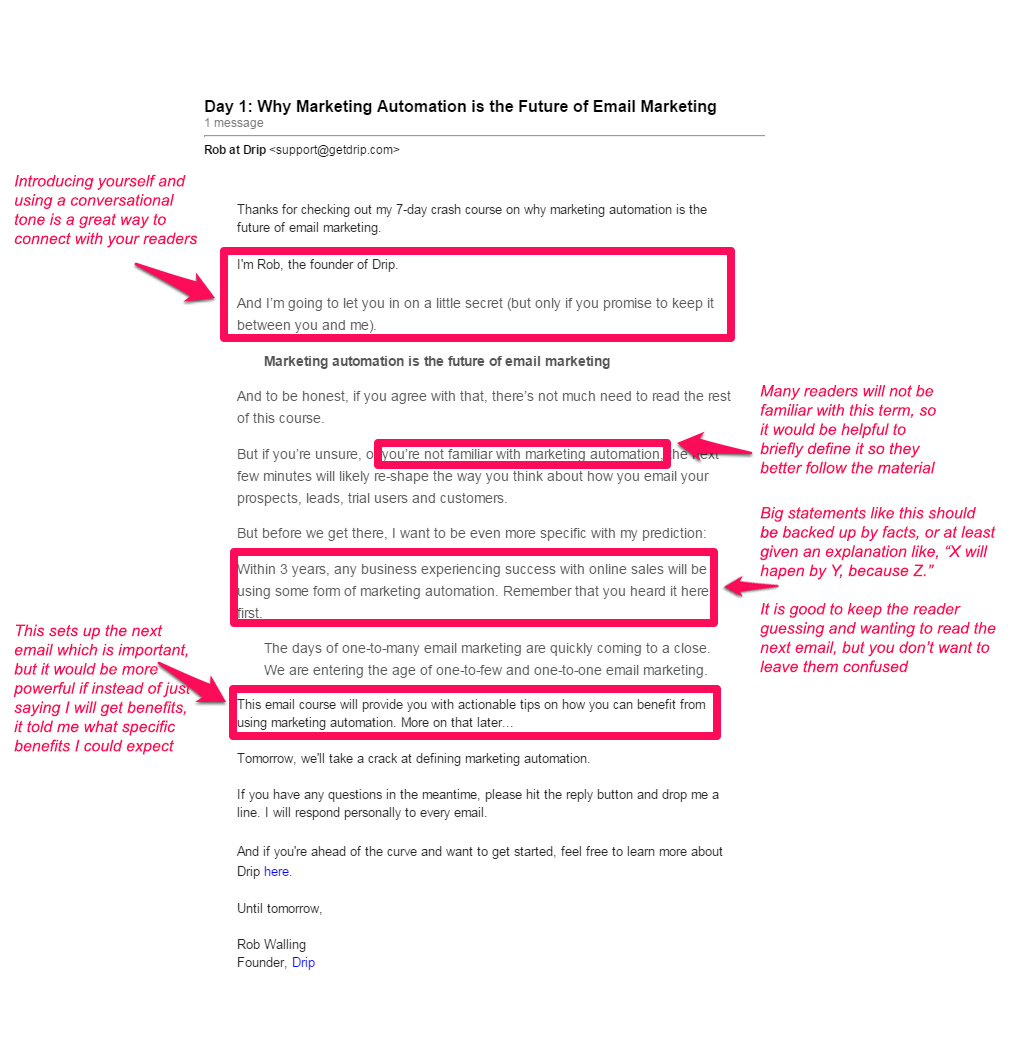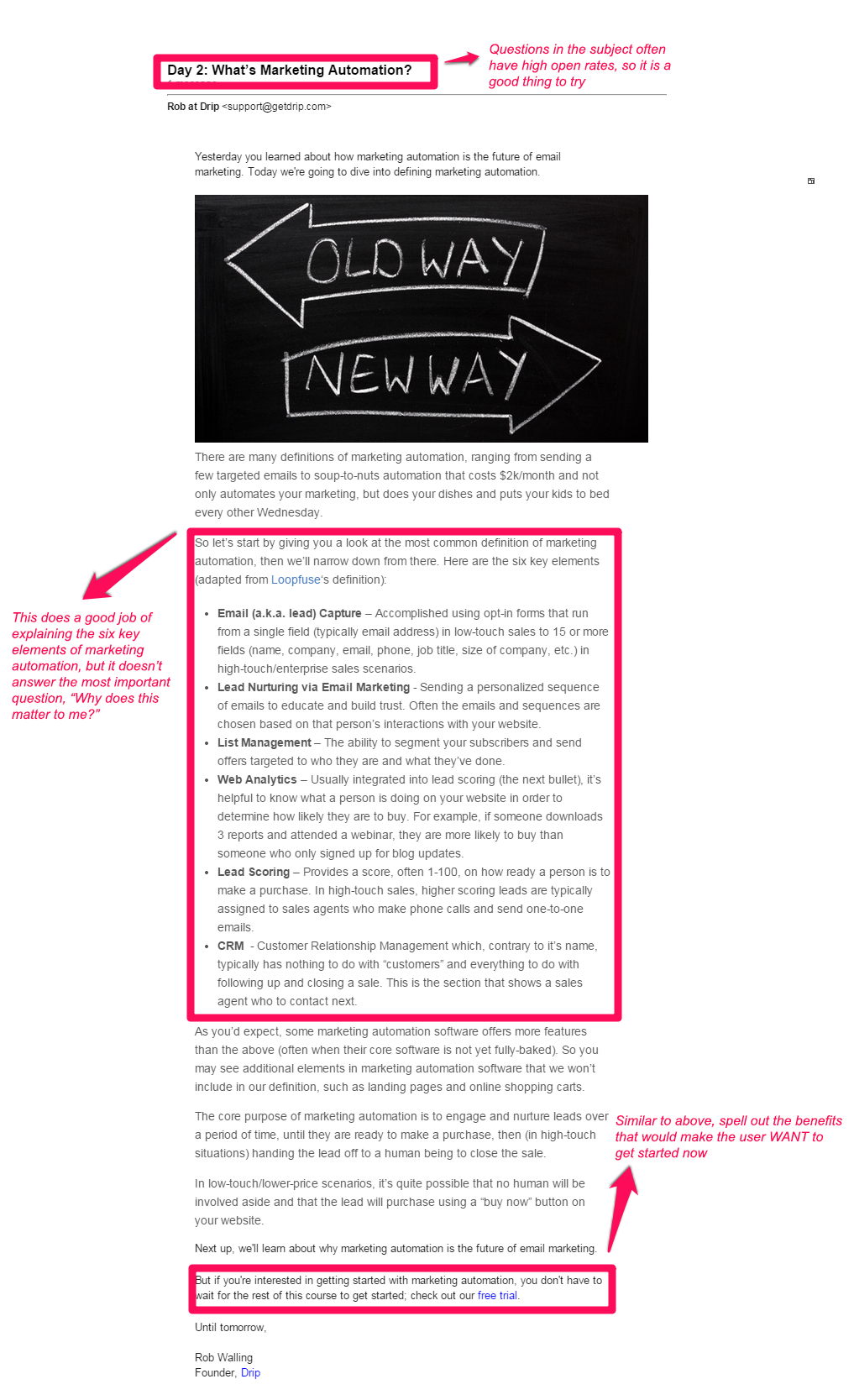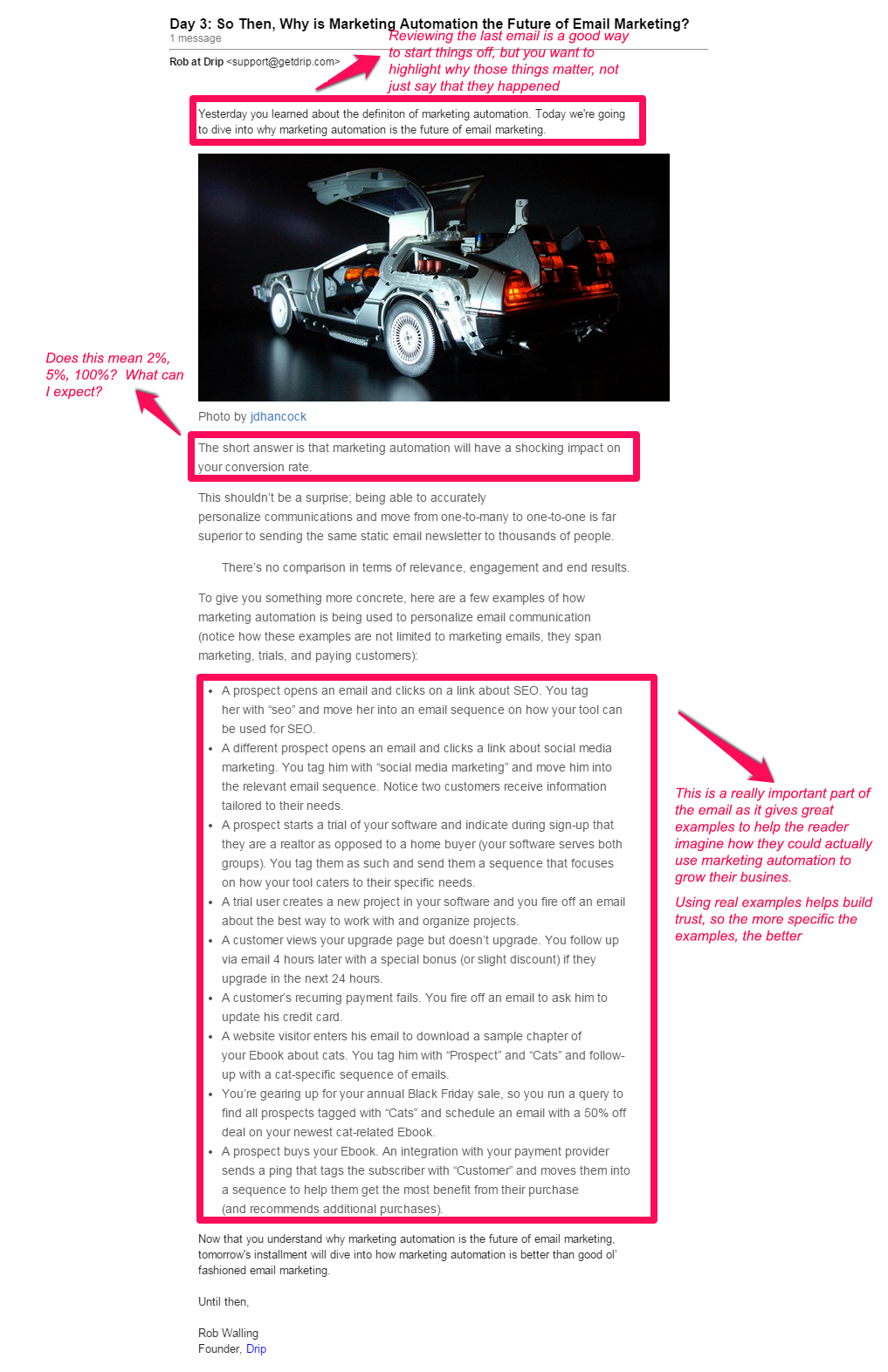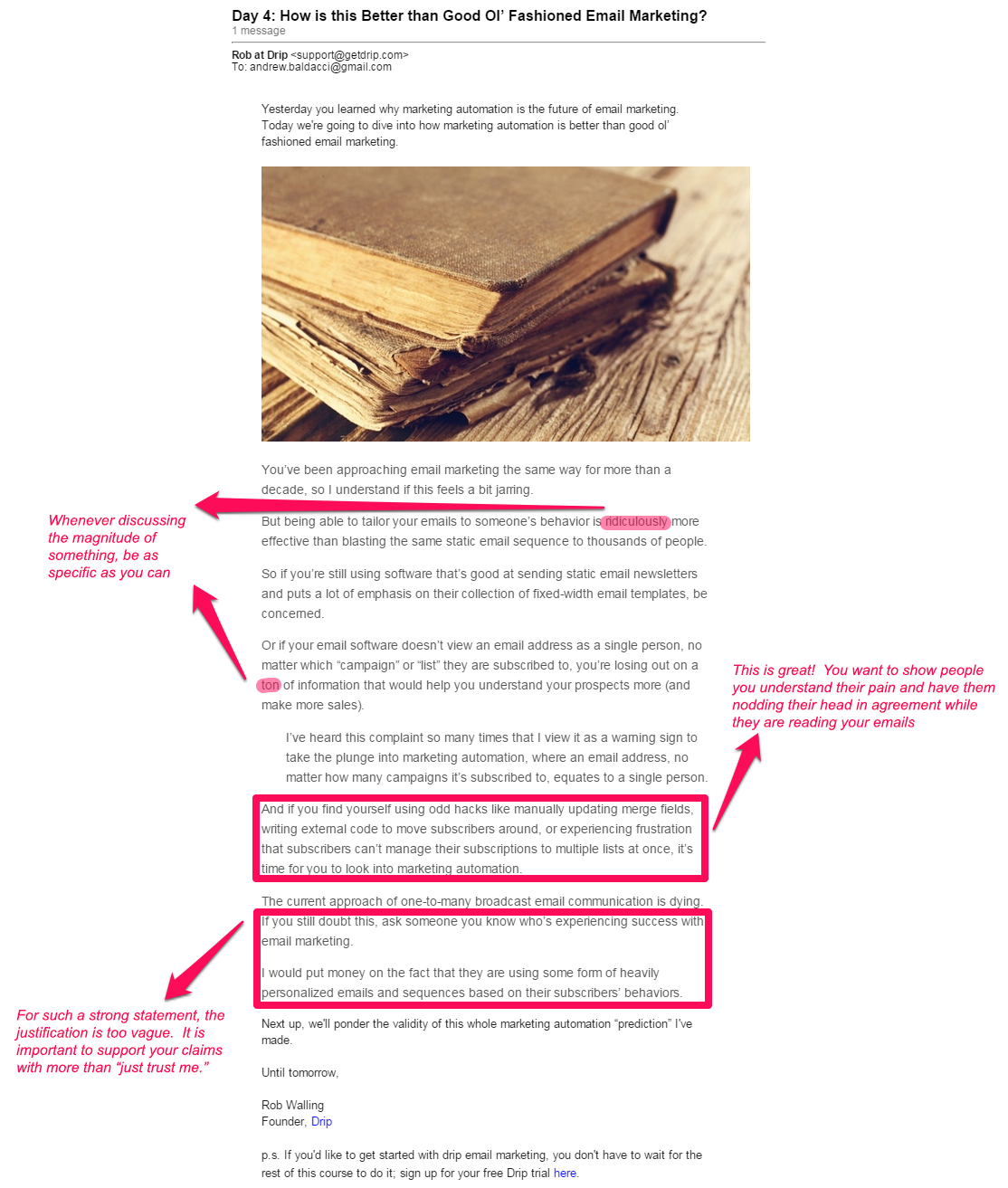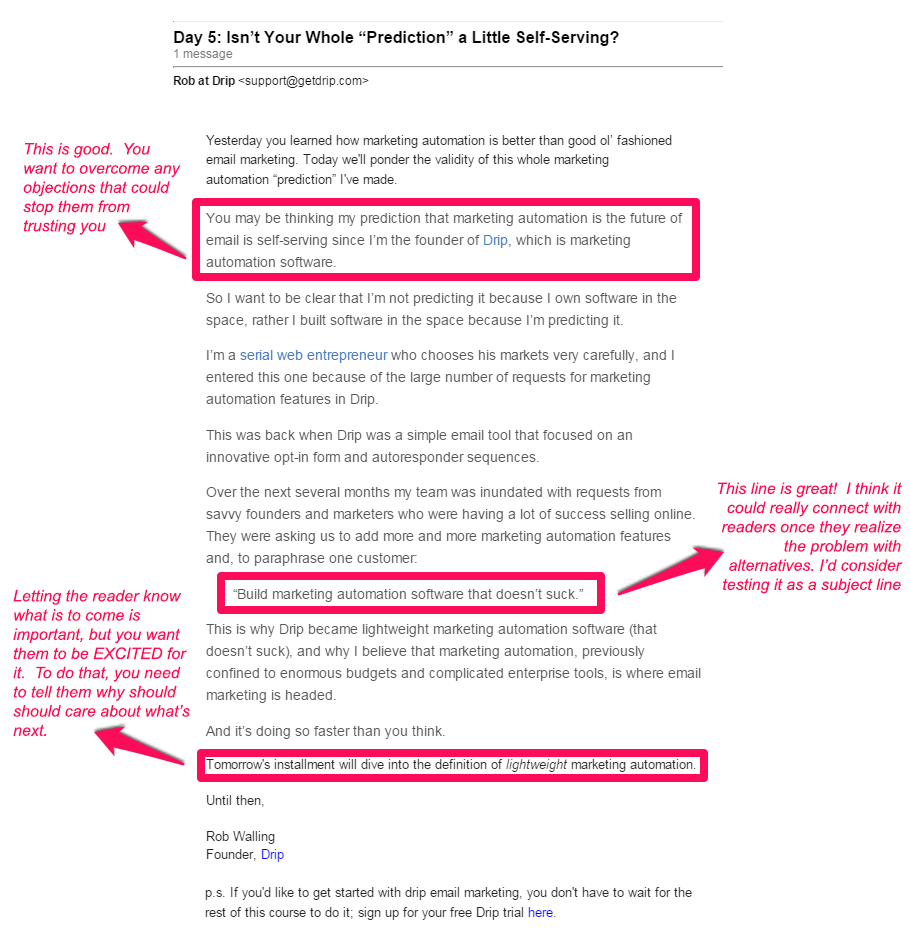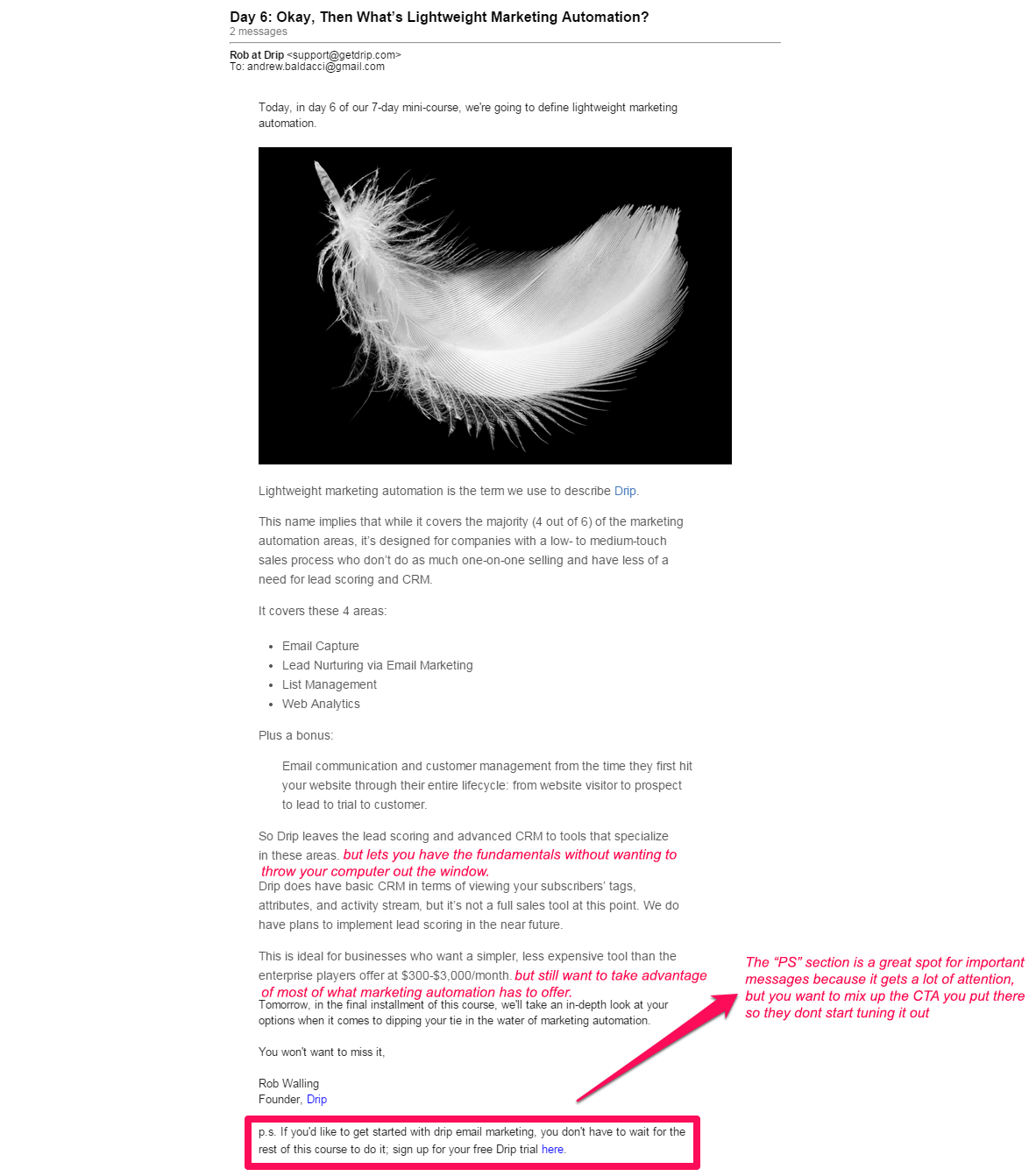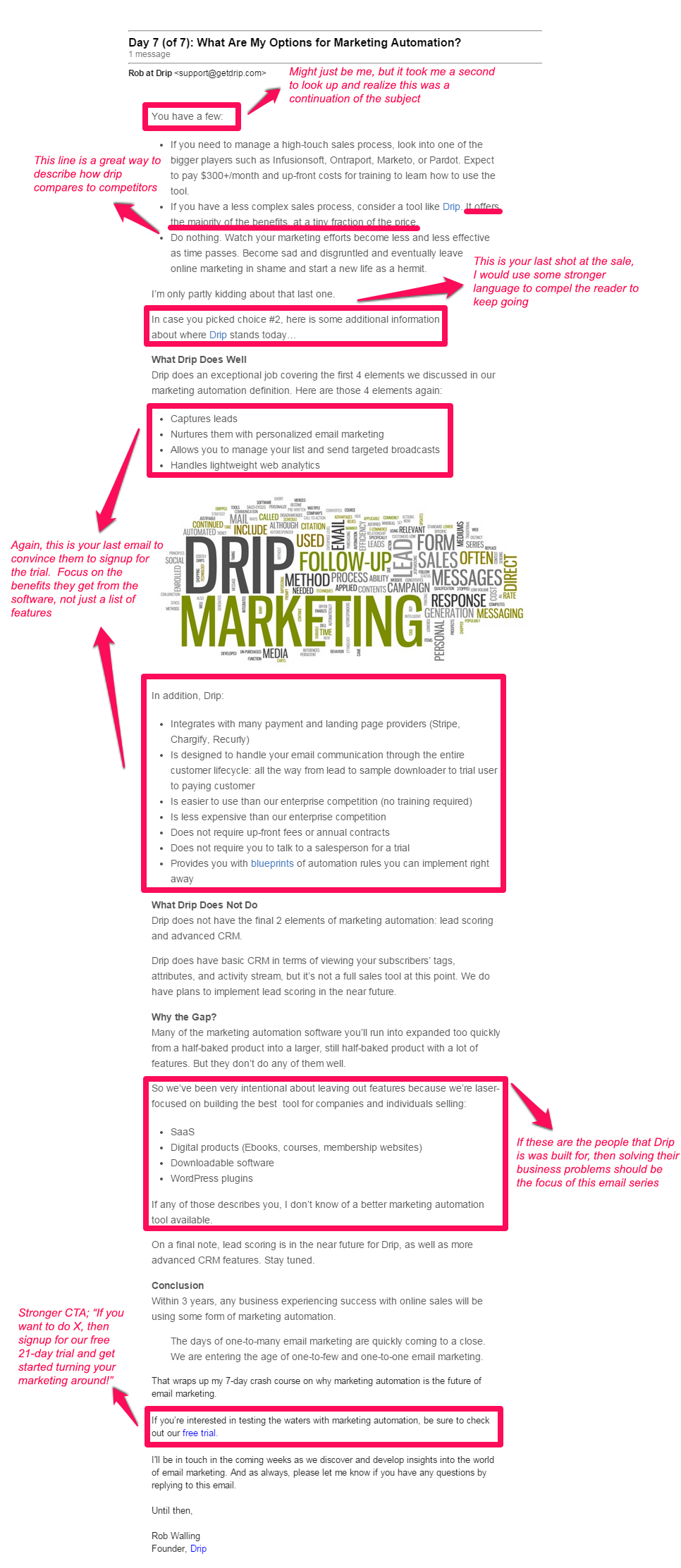7-day Email Crash Course
"Turn more website visitors into customers"
Drip was created by serial entrepreneur Rob Walling, who saw marketing automation gaining more attention and wanted to create a tool to help people get started. The goal? Create marketing automation that doesn't suck.
Through their blog, they offer a 7-day crash course on how to turn more website visitors into customers.
Below are all the emails sent over the course, marked up with my questions, comments, and concerns.
Afterwards, I give a high level look at what Drip did well and where they can improve.
Let's see how a company which aims to make advanced email marketing software available to everyone handles their own marketing campaigns.
My Thoughts:
The team at Drip got a lot right with their 7-day course on how to turn more of your website's visitors into customers, but I think with a few changes to the focus of their content, they could see even bigger returns.
A common theme I found throughout the course was the use of a lot of generic descriptive terms and examples. To illustrate this point, from the third email, "The short answer is that marketing automation will have a shocking impact on your conversion rate." If something will have a shocking impact, you want to use facts to actually shock the reader.
Remember, a significant portion of these readers don't know you, so why would they just take your word for it? Whenever possible, be specific.
Drip did really well with this in their blog post, Info Marketers: 12 Lead Capture Hacks To Grow Your List, it is just a matter of putting that into practice here.
The course was filled with a lot of information about marketing automation; what it is, the current state of marketing automation software, where things are going in the future, and so on. If somebody didn't have much exposure to the concept, this would serve as a great primer. This is crucial to a successful campaign. Your readers need to actually learn something from your content if you want to build a relationship with them.
However, a larger theme I saw, something that is really common in all forms of marketing, is focusing on the features and not the benefits. The goal of all your marketing, even educational material like this, needs to be to tie everything back to benefits for the customer. Don't make them think about why these things matter to them and their business. Tell them explicitly.
Put yourself in the reader’s shoes and ask the question, "Why should I care?" Putting a quick blurb tying it all together is helpful, but not enough. You want to craft your emails, from the ground up, with this question in mind. In order to make great content, you need to put the reader first.
SaaS, digital products, downloadable software, and WordPress plugins. These are the people that Drip was built for, so this is who should benefit the most from the emails.
From the second email, "The core purpose of marketing automation is to engage and nurture leads over a period of time, until they are ready to make a purchase." How can that target market of customers use marketing automation to achieve that core purpose? How will that help them sell more software? And how is drip best suited to help them achieve that? This is what really matters to customers.
Changes I would make:
There is great educational content in these emails, and you can tell a lot of work went into them, but they need to go one step further and answer the key question, "Why should my customers care?" It is crucial to think about how the course could be structured from the ground up to better achieve this goal.
Drip has identified four core segments of customers on their home page, but this course doesn’t seem to speak to any of those beyond a quick mention. Remedying this is where they will be able to find the biggest gains.
I would use the first email to explain what marketing automation is then follow up with why it is important to the reader's business.
From this point, the reader should have a good enough understanding of marketing automation at a high level, so it is time to get into the specifics. Find a handful of current Drip customers who come from each of those core markets, and create case studies based on these success stories, highlighting different features they utilized in each so the reader can see what is possible.
They don't need to be detailed action plans, just something that shows in basic terms how they used Drip to make more money.
This is the point where they should start to bring things back to Drip. "Marketing automation isn't new, so why should I care about it now?" a customer may ask themselves. Because now it is easy and affordable. This is where the pitch on lightweight marketing automation comes in, and ends with a soft sell.
Shifting back to more educational material, it is important to get the reader thinking about how they themselves could use this. Give them more ideas for possible implementations and highlight how easy their blueprints make it to get started. Most importantly, ask for input from the reader.
"Having trouble coming up with ideas? No problem! We deal with marketing automation every day and our customers have all kinds of different businesses, so if you need help getting started, just shoot us an email and we will get you pointed in the right direction."
The price point of drip is high enough that if a few prospects actually take them up on this offer, they can afford to take the time to help the prospect get value from their software on an individual level.
For the trial, they could even consider creating different onboarding tracks using more detailed case studies based on the specific type of business the user is looking to promote.
In the last email, they should recap what has been taught and, most importantly, why it should matter to them. From there, they need to sell a little harder and give a strong call-to-action by asking the user to start their trial.
My Takeaway:
The biggest takeaway from this is that when you are creating educational content for your readers, you need to make sure you put them first and above all else provide them with tangible value. For B2B this typically means you want to show how somebody can make more money, or save more time.
Education for its own sake is good, but people are selfish and in their dwindling free time they don't want to read about something if they won't get any direct benefits as a result.
Drip has the education part down, they just need to use some more concrete examples to justify their position, and make sure it all fits into a framework that clearly ties everything back into the value and benefits the reader will get.
Interested in using Drip yourself? I use it on this blog and highly recommend it. If you want more info, check out my detailed, 1500-word review.
Could your business benefit from a private marketing teardown?
I do a limited number of private teardowns each month, so if you are interested in having me create an actionable marketing roadmap for your business, reach out to me today and I will get you on my calendar.
